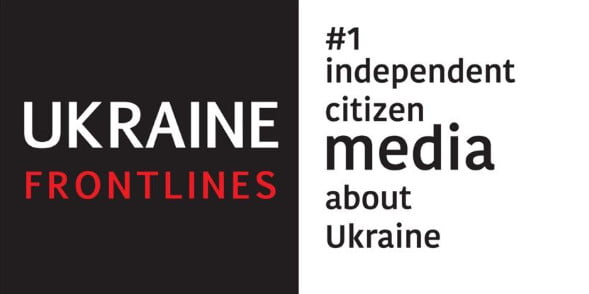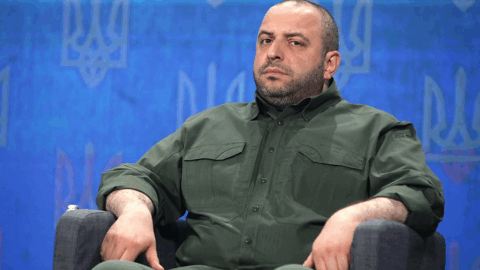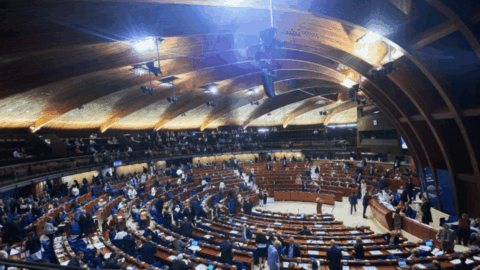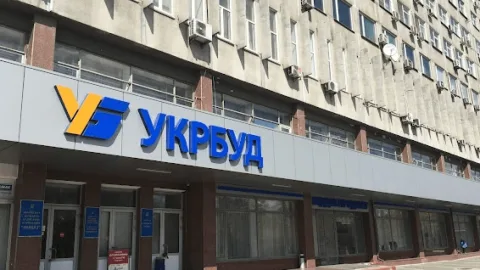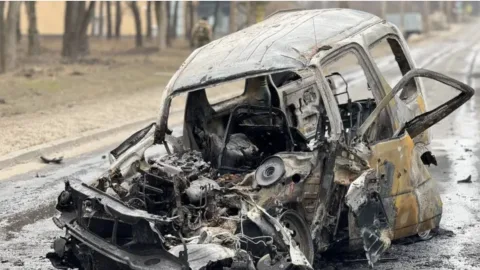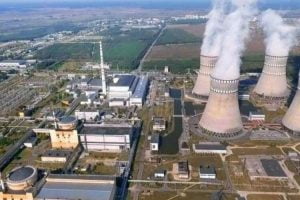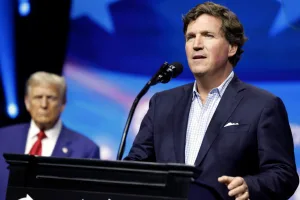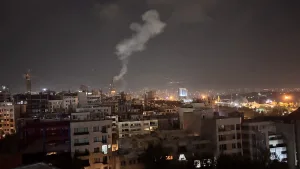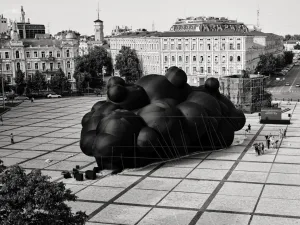It is critically important that the Supreme Commander-in-Chief’s Staff addresses the issue of constructing protective structures for the energy system. Here in the material, there are statistics on the construction plan of protective structures and the status of work completion. RBK Ukraine investigtes.
The organization and state of construction in some important areas are failing, strategically important work is being sabotaged, and we are losing the chance to preserve valuable energy facilities. This is the responsibility of Prime Minister Denys Shmyhal, and he must report on the reasons for the failures. If certain factions within the government have not divided the funds, or if these contractors are unsuitable, then replace them, but do not stop the work; every day is crucial.
Why is this not being resolved by the state, and why does it require disclosing classified information in the media to attract attention? It is evident that decisions are made only where there are many likes and reposts; otherwise, the Staff does not make decisions.
Russian Federation forces continue systematic terrorist attacks on Ukraine’s energy facilities. To counter this, Ukraine planned to build a powerful three-level protection system for 22 energy facilities by the end of 2024. This project was to be implemented by the Cabinet of Ministers in conjunction with the General Staff of the Armed Forces of Ukraine, as directed by the president.
However, at the beginning of this week, business representatives involved in the construction of fortification structures announced that all work had been halted due to significant debt. They stated that Prime Minister Denys Shmyhal is personally blocking the funding for the project.
For more details on the reasons behind the funding stoppage, Denys Shmyhal’s role in this, and the expected consequences for Ukraine, read the full article on RBC-Ukraine.
Attacks on the energy sector
For the first time, the construction of protection for energy facilities was discussed in October 2022. Then the Russians began massive shelling of the energy infrastructure. A month later, a blackout occurred, and all power units at Ukrainian-controlled nuclear power plants were shut down.
In total, during the first year of the full-scale invasion, Russians attacked energy facilities 255 times, according to the Prosecutor General’s Office. Donetsk, Dnipro, and Kyiv regions suffered the most.
The authorities did not publish data on the extent of the damage. The only official information on the consequences of Russian shelling was a report by the United Nations Development Program. It states that as of April 30, 2023, the total generation capacity, i.e. electricity production, has more than halved from 37.6 GW to 18.3 GW.
Maneuvering capacity – electricity generated by thermal power plants and combined heat and power plants – suffered the most. Their capacities decreased by 68%.
In addition to electricity generating facilities, distribution stations are an important part of the system. Forty-two out of 94 critical high-voltage transformers were damaged or destroyed.
Plan B for the energy sector
In fact, against this background, the president initiated a pilot project for the construction, repair, and other engineering and technical measures to protect critical infrastructure in the fuel and energy sector. This decision was repeatedly discussed at meetings of the National Security and Defense Council.
Pursuant to the President’s order, Resolution No. 1482 was adopted on December 27, 2022. The State Agency for the Restoration and Development of Infrastructure became the main customer and budgetary funds manager for 22 substations of NPC Ukrenergo.
The contractors were Avtostrada, Onur, Osnova, Energetichno-Roadstroy, Avtomagistral-Pivden, Rostdorstroy, ShRBU-48, IK ARKON, PBS, Techno-Bud-Center, and Technomain-Engineering.
As the companies involved in the construction told RBC-Ukraine, the first work on the projects began in April 2023. They were implemented according to the desing&build model with the simultaneous development of project documentation. This was preceded by several study tours of the working group to the UK, and all design decisions were approved by the General Staff, Ukrenergo, and international partners (the US, UK, and Japan).
As part of the program, a separate model of an experimental fortification facility was built in Hlevas, which was tested in December 2023 for strength and protection against explosions. According to the test results, the constructed facility showed excellent results.
It is worth noting that today no other European country has similar third-level defenses and, accordingly, has no experience in designing them. This experience was unique for both us and our international partners, so in addition to the Ukrainian side, military engineers from the UK, USA, Germany, and Japan were also present at the tests. They provided support for the tests and compiled a report based on its results, which was sent to the ambassadors of the G7 countries.
In January of this year, the then head of the State Agency for Infrastructure Restoration and Development, Mustafa Nayem, said that by 2024 the agency plans to build three-level protection for all 22 Ukrainian energy facilities.
In March, the president issued a separate decree instructing the agency to implement projects to build third-level defense structures for energy facilities.
However, as of today, this order has not been fulfilled: work on all facilities of the third level of protection has been completely stopped due to lack of funding.
Contractors are owed billions of dollars for work performed and materials purchased. As the owner of Avtostrada, which, among other things, was supposed to build the third-level protection for the largest substation in Ukraine, posted on Facebook, the amount of funds allocated for construction does not exceed 10% of the need. “This is a direct violation of the decision of the Supreme Commander-in-Chief’s Office and the National Security and Defense Council,” Maksym Shkil said.
At the same time, according to the Ukrainian Infrastructure Association UNITE, as of April 2024, the Ministry of Finance owes more than UAH 20 billion to companies that are restoring infrastructure damaged by the enemy.
The business is convinced that it is necessary to provide funding to repay debts and finance to complete the entire range of work at the facilities and implement the President’s decision at the National Security and Defense Council as soon as possible.
“The enemy is destroying critical infrastructure because the economy and national security depend on it. Therefore, its restoration is a priority on a par with weapons,” UNITE Executive Director Ihor Samokhodskyi emphasized.
Three levels of security
All design decisions for the construction of the third level of protection for energy facilities must be coordinated with the General Staff and the State Emergency Service.
The first level of protection involves the construction of gabions and big bags. As you know, the Recovery Agency is currently protecting 90 facilities in 21 regions from drone and missile debris.
Gabions are a type of fencing made of strong metal mesh filled with stones.
Big-bag is a soft container, an industrial container made of flexible material and designed for transportation and storage of various kinds of goods and materials with a loose consistency, such as sand.
The second level is protection against drones and shaheds. These are concrete structures being built around Ukrenergo’s main grid since March 2023. The protection will cover 22 substations and 63 autotransformers in 14 regions.
The third level is missile defense. The goal is to protect 22 substations from direct hits by the most powerful missiles in 14 regions. They work with Ukrenergo, which forms the task for design and construction.
The design is based on input from the General Staff, as well as on the guidelines for engineering troops and international regulations received from specialized specialists during training in the UK according to UK and US norms and standards.
Since there has been no particular progress in implementing the resolution, at the last meeting of the Cabinet of Ministers (June 20, 2024 – ed.), President Volodymyr Zelenskyy again instructed the government to present a “clear plan for the completion of protective structures for the energy sector.”
“Each such facility has a clear deadline for completion. The executors at every level need to speed up,” the head of state said.
Why the plan failed and what will happen to the energy sector
Speaking to RBK-Ukraine, Mustafa Nayem, the former head of the State Agency for Infrastructure Recovery and Development, notes that the agency’s team began to face constant opposition, resistance, and the creation of artificial obstacles by the government in November last year.
“We started having nightmares about bureaucracy, when documents for payment for protective structures, fortifications or restoration were approved by the government for months, returned six to eight times with ridiculous comments, delayed for several months, and some have not been approved yet. For three months now, the government has not agreed on the payment of almost 150 million euros that the state has borrowed from the European Commission under the Support for Ukraine’s Early Recovery program for critical projects, including water supply and energy protection,” Nayem said.
In turn, representatives of contractor companies believe that the Prime Minister Denys Shmyhal is personally responsible for stopping the construction of the third level of protection of energy facilities, and claim that he completely stopped all payments and instructed the Bureau of Economic Security and the State Audit Service to check prices and construction of energy facilities after criticizing the government’s actions in April of this year. It was then that the business first publicly talked about the large debt to contractors for the restoration of critical infrastructure.
According to Nayem, late payment of contractors undermines trust in the state; it slows down and, in some areas, has completely stopped construction work, which means a loss of trust of the market, local authorities, and citizens. But most importantly, all of this has a negative impact on the country’s defense capabilities, cargo logistics, protection of critical infrastructure, and exports of goods. Obviously, such actions will sooner or later lead to criticism not only within the country but also from international partners.
“The cost of the project to build fortifications for energy facilities is estimated at at least UAH 60 billion. This is a significant amount, especially for a country at war, but we should not forget about the knock-on effect for the economy. If these funds are allocated, almost 30-40% of them will return to the state budget through taxes, salaries for employees in related industries, etc. That is, the real losses for the budget would be much smaller,” a source involved in the project explains.
However, the state’s failure to pay debts today not only undermines ongoing work but also jeopardizes future efforts to restore and protect infrastructure, according to the Ukrainian Infrastructure Association UNITE.
In particular, due to the Prime Minister’s inaction by stopping funding for infrastructure facilities, including the construction of the third level of protection for energy facilities, Ukraine is facing an energy collapse, Shkil adds.
Indeed, in May of this year, the head of the Ministry of Energy noted that in recent months the Ukrainian energy system has suffered the most damage since the start of the full-scale war with Russia, so he urged consumers to conserve electricity and prepare for an extremely difficult winter.
However, if nothing is done now to protect distribution substations and further strengthen the power grid, it will be even more difficult to predict further developments in the energy sector with each new attack.
Tags: Denys Shmyhal russia ukraine war Ukraine Ukraine government